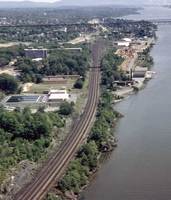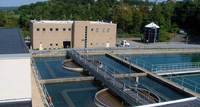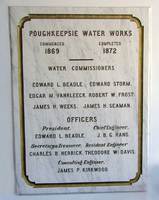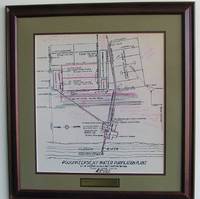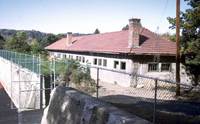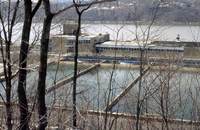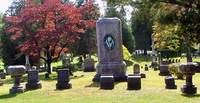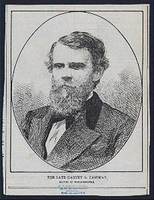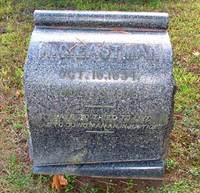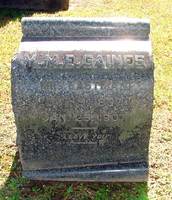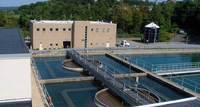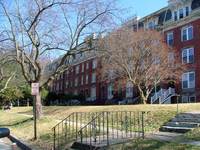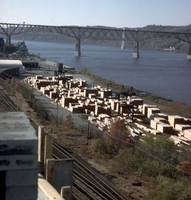Hudson River Shoreline Parcels
The eighteenth and nineteenth century were periods of strong commercial and industrial activity along the riverfront in the Poughkeepsie vicinity. Almost all of the industrial activity has disappeared. It´s northernmost reach was above Hoffman Street, notably the Fallkill Iron Works and Poughkeepsie Iron Works operated by Edward Bech and the Myers Dock, immediately north of the iron works (see note 1).
Henry D Myers Dock
The Myers dock was never a part of the Marist College campus, but it is an excellent southern starting place to study the lands along the river. Henry D Myers built an icehouse there, and operated an ice harvesting business for two decades. The dock was sold to Arthur Dutton of Springfield MA who started a wholesale lumber yard which would at one time be the largest yard in the Northeast (see note 2).
The Myers dock was important to Dutton because he imported much of the lumber. When I was a student at Marist (1947-1950) we constantly saw ships docked there, many of them from Russia (see note 3). The wood was aged after unloading, which entailed spreading it out for several months. This required more space than Dutton originally owned. On two occasions the lumber company purchased riverfront land from the Marist Brothers, first 150 x 100 feet in 1928, and then 600 more riverfront feet in 1929 (see note 4). This left the brothers a small section of about 180 feet immediately to the north of what had been sold. There was a small cove on this section, which Dutton filled in with blasting debris it created as it leveled the 750 feet purchased. This small parcel became the location of the Martin Boathouse in 1963 (see note 5).
Water Treatment Plant
Although the population of Poughkeepsie City reached 20,000 by 1870, the city had no central water supply suitable for household use (see note 6). In 1855 an engineer recommended Morgan's Pond (now called Vassar College Lake) as a reservoir, but the financial panic of 1857 and the Civil War prevented carrying out this plan. By 1869 an act of the legislature authorized a committee which would have borrowing power (subject to a taxpayers´vote) to establish a water supply. Then began a series of public meetings at which two of the principal speakers were Harvey G Eastman and Mayor Morgan. Assemblyman Hegman indicated he did not believe there was a natural well in Poughkeepsie that was fit for use for family purposes. Mr. Eastman said that in his visits to other localities to promote the virtues of Poughkeepsie he was met with the response that Poughkeepsie had fine schools and churches, but “Oh so sickley” The taxpayers voted overwhelmingly to go ahead with planning and implementation of a water system. About this time Mayor Morgan constructed Morgan Lake on College Hill, it is said for the purpose of selling it to the City as part of the water supply (see note 7).
The committee sought the advice of James P Kirkwood of New York City, a well-known engineer and a specialist in the setting up water systems. He recommended obtaining the water from the Hudson River, using sand filtration as the principal means of treating the water. The commissioners chose a site owned by Alanson and Sarah Swain from 1858 to 1874. This was a southernmost section of the Barnard parcel (see note 8). In 1872 the Swains sold additional land to the City of Poughkeepsie (see note 9). Two sand filters were installed, and remained in use at least until 1905.
The cost of the water works installation and piping to the city had reached $428,000 by the end of 1873. The panic of 1873 was unforeseen beforehand, and placed heavy burdens on the City of Poughkeepsie (see note 10).
In 1896 the plant was enlarged using more land from the Barnard parcel (see note 11). Again in 1907 the plant was expanded, this time taking land from the former Bech estate (see note 12).
About 1970 the plant expanded again, taking more land from the Barnard lot, but abandoning the original filter beds that were located east of the railroad where the current water works road splits, one branch turning north toward the newer plant, the other turning south towards the Champagnat mid-rise dormitory near the rotunda (see note 13). When the city located a new sewage treatment plant at the southwest corner of the Myers parcel, the college negotiated a swap of land, taking possession of the unused portion of the water treatment facility extending from across the road from the new water treatment facility to land almost touching the foundations of the Champagnat dormitory additions. The original empty filter beds were large enough to fit five regulation size tennis courts. There was a building adjacent to the filter beds used for maintenance until the maintenance department moved across route nine.
Harvey Gridley Eastman (1832 - 1878)
For several decades prior to the Civil War, an informal group of leading citizens worked together on projects for the good of Poughkeepsie. They received the name Improvement Group, proposing and investing on several projects, sometimes via government, sometimes via private enterprise, sometimes with a combination of public and private. Their enthusiasm was not always matched with success; many of them sustained large financial losses in these ventures. After the Civil War another group of leading citizens worked to improve the City. The water works project was one such project. Among this group, and probably the most enthusiastic example was Harvey Gridley Eastman.
Harvey G Eastman was born near Rochester NY a member of the Eastman Family (see note 14). He began to teach in a business school run by his uncle in Rochester, and then decided to found his own school in Oswego NY. In 1959 he moved the school to Saint Louis, where he made the mistake of hiring several abolitionist teachers in the slave state of Missouri. In 1959 he moved his school to Poughkeepsie, enrolling one student in November 1859 but quickly growing to enroll over 1600 students by 1865.
One of his bright ideas was to have the school concentrate on preparation for business rather than the liberal arts. This was a variation of the concept of New York University of whom Samuel F B Morse was a founder. The course work was to emphasize the practical rather than the theoretical. The course work might take from one to two years. A second unusual idea was this: Eastman Business College owned no buildings! The college rented five separate buildings for its library and classroom space. There were no college dormitories. Students were placed with families living in Poughkeepsie.
Among its distinguished alumni was Sebastian S Kresge, founder of Kresge variety stores (often called five-and-dimes) which has morphed into K-Mart, one of the largest discount institutions in the United States, especially since K-Mart acquired Sears store. Another alumna was my first secretary at Marist College, Mary Travis. She had retired from head stenographer position at Central Hudson, then worked for me part time for sixteen years. The contrast between Kresge and Travis showed that Eastman Business School was a hands-on institution which covered the entire business spectrum. Eastman Business School closed its doors in 1931.
Eastman was a promoter. The Eastman College Band played at Lincoln's second inauguration and after the assassination accompanied Lincoln's body in the official train from Washington DC to Albany NY. The band helped make the College known through its frequent trips to play in other cities.
Eastman also plugged for the construction of a bridge across the Hudson. He was elected to the Assembly in 1873 and introduced a bill to authorize construction of such a bridge. He presided over the laying of a cornerstone for the eastern tower on 17 December 1873. However, the bridge was not opened for train traffic until 1 January 1889.
Another project for Harvey Eastman was the establishment of Eastman Park between Market Street and Jefferson Street which run north/south and Montgomery and Franklin Streets which run east and west (see note 15). Eastman envisioned a park similar to Washington Square in New York City. He developed a series of homes within a single building structure (see note 16). These were placed near the division between the lower one third and upper two thirds of the Park. They faced north and onto a new street named Terrace Street. He was supported in this venture by several leading citizens, including John Winslow, who purchased a large section of the lot including the houses (see note 17).
The remainder of Eastman Park was a swampy area fed by several streams shown on nineteenth century maps. At great expense Eastman developed drainage systems to convert the land into parkland. But he built in the capacity to create a pond in the center with a bandstand. The pond was very popular for ice skating in the winter months, and the band once more reminded citizens of the existence of Eastman Business College, perhaps encouraging some to offer housing to students coming from other parts of the country.
Harvey G Eastman developed congestion of the lungs. He traveled to Denver CO in hopes of improving the congestion in the mile high city. He died there, not yet 46 years old. The obituary in the New York Times described him as possessing alert intellect, strong will power, and unimpeachable integrity. He left his wife Minnie Clark Eastman and two daughters, Cora, age 19 and Charlotte age 11.
A C Dutton Lumber Company
When one industry dies, others arise to take their place. The Poughkeepsie Iron Works and Fallkill Iron Works ceased business in 1913, unable to match newer competition from the Mesabi Range of ore deposits in Minnesota coupled with coal supply near Pittsburgh. Arthur C Dutton investigated the potential for a lumber yard on the docks of the iron companies, defunct whaling companies and Myers dock (whose ice harvesting industry was also declining). He assembled a large area from several sources that he intended to use as a wholesale distribution center for servicing lumber yards in the northeastern United States (see note 18).
The area assembled included space for docking two oceangoing ships. The lumber company imported lumber, unloaded it on its docks, allowed it to age/cure by spreading it out in the fresh air for several months, and then shipping it to local lumber companies, usually by rail, as it had inherited and upgraded several spurs to the New York Central Railroad.
Dutton realized that it needed more room to spread out its aging/curing wood. It arranged two purchases of land from its northern neighbor, the Marist Brothers (see note 19). To level the shoreline required blasting. The rock debris was deposited in a small cove on the 180 x 150 lot north/south belonging to the Marist Brothers that was now sandwiched between Dutton land and land belonging to the City of Poughkeepsie used for hosting the Poughkeepsie regatta and the intake for the water works. The rock debris fill created a level spot for Marist College to locate its Martin Boathouse in 1973. The prices paid by Dutton for the two land acquisitions ($10,000 and $50,000) were used to enlarge the Bech carriage house by raising the roof about ten feet, and equipping the building as the key academic unit for the forerunner of Marian/Marist College, Marist Training School which had begun operation in 1929. The wooden Marian Building adjacent to Greystone was also upgraded for academic use. Dutton Lumber Company remained in full operation to the decade of the 1950, but its business began to decline as curing moved more and more to kilns operated at the points of origin of the lumber harvesting companies and the capacity for delivery by trucks direct to the local lumber yards increased. By the 1970s Dutton had ceased operation.
Notes
Note 1. Some vestiges of these long gone industries remain, usually transformed in imaginative ways, such as the transformation of a brick hotel operated by the Dutchess Whaling Company into legal offices. The Dyson Foundation is taking a lead role to preserve and restore some of this history stretching from Main Street northward.
Note 2. Deed 16 Sept 1913 liber381 page 501 John Townsend & wife to Arthur C Dutton. Arthur Dutton made several other purchases after that time to increase the size of his holdings.
Note 3. The dock was part of a deep water port which meant it could handle oceangoing vessels. It could accommodate two large vessels at one time
Note 4. Sale details and prices are taken from the Annals of St. Ann´s Hermitage 1904-1934 pages 65 and 68. The relevant deeds list a nominal price of $100. 26 Feb 1929 liber 498 page 244 Marist Brothers to Dutton Lumber Company 0.552 acres and 22 July 1929 liber 498 page 249 Marist Brothers to Dutton Lumber Company 3.08 acres.
Note 5. When Susan Brown worked on the development of the Longview Park-section, she discovered that the ownership of the Brothers was only to the high water mark of the Hudson marked on maps in an earlier time. The fill provided by Dutton technically belonged to the State of New York. This was rectified in the course of arrangements for Longview Park.
Note 6. For a fuller explanation of the water and sewage development, see Platt History of Poughkeepsie 1904–1934 pp. 210–214.
Note 7. Details taken from Edmund Platt, >History of Poughkeepsie pp. 210 -212
Note 8. The original taking of land from the Swains was in 1871 or 1872 via a Supreme Court Order in Book 10 page 93. This has been cited in several subsequent deeds, especially 5 November 1874 liber 177 page 589 Alanson and Sarah Swain to Jane and John Robinson. I requested the county records division to retrieve Book 10 from remote storage, but have not (as of 2 August 2012) been informed that the Book 10 has arrived.
Note 9. See deed Alanson and Sarah Swain 26 April 1872 liber 164 page 482 Alanson and Sarah Swain to City of Poughkeepsie. The deed specifies three parcels, two adjoining the Bech properly and one west of the Hudson River Railroad.
Note 10. In addition to the water works, the city had embarked on sewer construction work costing $253,000 and improvement of the Fallkill Creek and removal of four of the ponds used to power the mills, as steam power was now more efficient than water power, and the ponds caused flooding. The work cost $115,000. To add more pressure on City finances, the City had subscribed to $600,000 for bonds to help in construction of the Poughkeepsie and Eastern railroad, which by 1873 had declared bankruptcy, so that recoup of the bonds was questionable. See Edmond Platt, History of Poughkeepsie, pp. 212-214. In fairness to the city planners, recall between 1868 and 1873 over 33,000 miles of railroad track had been built in the United States, of which the Poughkeepsie & Eastern was only 40 miles. This over construction of railroads, coupled with the falling price of silver when Germany stopped minting silver coins triggered problems not only in the United States but through Europe, leading to runs on banks.
Note 11. See deed 1 October 1892 liber 287 page 486 Cordelia Yvelin executrix of estate of Gardiner Yvelin to the City of Poughkeepsie. This parcel extended 300+ feet east from the railroad tracks, then formed a second rectangle moving southward 251 x 57 feet alongside the existing water works property. The net result was like an inverted letter L tucked against the water works property east of the railroad.
Note 12. See deed 10 October 1907 liber 355 page 437 Nicolaus and Gertrud Jungeblut to City of Poughkeepsie. Elizabeth´s granddaughter Pauline transferred the ownership to the Jungebluts, probably to make sale of the property simpler as the principals would all be based in the United States. The deed cites two lots, the first between the Hudson River and the tracks of the Hudson River Railroad 267 feet wide by 349 feet north-south amounting to 2.652 acres, the second east of the tracks 320 feet wide and 220 feet north-to-south containing 2.348 acres. Sale price was $4,000.
Note 13. See deeds 19 November 1974 liber 1397 page 585 Marist College to the City of Poughkeepsie which ceded a lot 153´ x 303´ next to the new water treatment plant; and 4 December 1974 liber 1397 page 587 which acquired the original filter beds, forming a large concrete basin. The beds were converted into five tennis courts used until the construction of the Mid-rise dormitory adjacent to the Rotunda.
Note 14. Harvey was a cousin of George Eastman, who founded Eastman Kodak Company.
Note 15. Principal deed was 7 May 1863 liber 131 page 265 Jennettte Jewett (widow) to Harvey Eastman. This lot encompassed all the land along Market Street and all the land along Franklin Street, forming a reverse letter L. Several other deeds completed the entire rectangle bounded by Montgomery, Jefferson, and Franklin and Market streets.
Note 16. The model for this was the Row houses in northeast corner of Washington Square built on part of the 21 acre Minto farm deeded to Sailors´ Snug Harbor by Robert Richard Randall to be used to establish a home for aged or debilitated sailors. The Snug Harbor association decided to build a unified series of homes for sale or rent, retaining ownership of the land and use the proceeds to establish and maintain a permanent home for retired sailors in Staten Island. The Row is a unified group in Greek Revival style. The sailors´ home on Staten Island is also Greek Revival. Emily Kies Folpe, It Happened on Washington Square, Johns Hopkins University Press, © 2002 352pp. see pages 73-77.
Note 17. See deed 23 Nov 1874 liber 178 page 52 George Innis & George P Pelton to John F Winslow. For $18,604 Winslow purchased the eastern rectangle bordered by Terrace Street, Market Street, and Franklin Street measuring 241´ north to south and 336´ west of Market Street. This was a section of the land sold to Innis and Pelton by Eastman 1 April 1874 liber 176 page 262 Harvey G Eastman & wife to George Innis & George P Pelton.
Note 18. See deeds 11 September 1913 liber 381 page 501 John Townsend and wife to Arthur C Dutton
11 September 1913 liber 381 page 499 John Sague and Sam Robinson to Arthur C Dutton
11 August 1919 liber 407 page 37 Robert and Cornelius Wilkinson to A C Dutton Lumber Company
7 November 1921 liber 419 page 336 Church of Saint Peter to A C Dutton Lumber Company
Note 19. Deed 20 February 1929 liber 498 page 244 Marist Brothers to A C Dutton Lumber Company for 0.533 acres which amounted to 150 feet north-to-south along the Hudson shore.
Deed 22 July 1929 liber 498 page 249 Marist Brothers to A C Dutton Lumber Company for 3.08 acres which amounted to 600 feet north/south along the Hudson shore.
Marist College | Marist Archives & Special Collections | Contact Us | Acknowledgements
